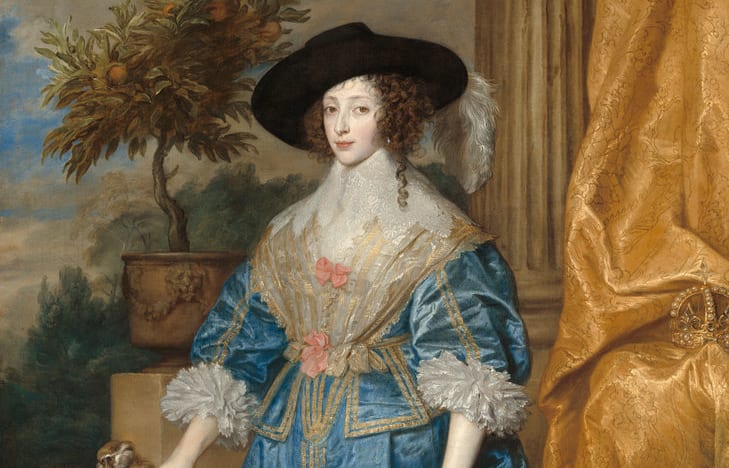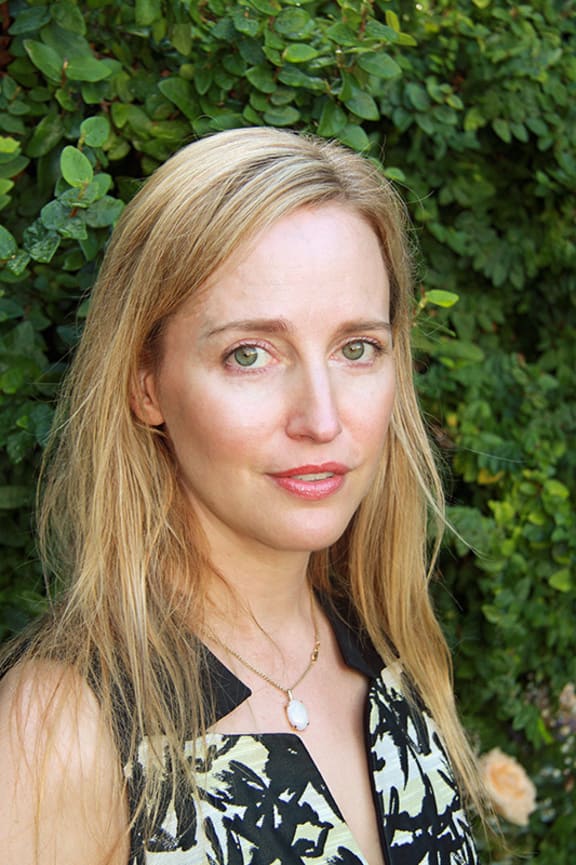In the 1600s there were dozens of palaces all over London and the gilded rich of the day amassed vast treasure troves of possessions to showcase their wealth.
Among them was Queen Henrietta Maria, the French wife of King Charles I.

Sir Anthony van Dyck (Flemish, 1599 - 1641), Queen Henrietta Maria with Sir Jeffrey Hudson, 1633, oil on canvas, Samuel H. Kress Collection 1952.5.39 Photo: supplied
Auckland University associate professor Erin Griffey is an expert on the French queen.
She’s been made a Fellow of the Society of Antiquaries of London, which has a focus on history and antiquities – “old stuff” as her daughter would say.
It’s a society dominated by men. So much so that Griffey was the first woman from New Zealand to get the honour.
“I’m really, really honoured and pleased because it involves the kind of validation of your peers and it’s a really esteemed institution that’s been around for hundreds of years… so you’re part of the community of great scholarship.
“I live in the past, so it’s perfect for me.”
Griffey has been recognised for her work on Henrietta Maria of France, and says she’s tried to walk in the queen’s footsteps.
Henrietta Maria resided in Somerset House on the Strand, among the noble houses of the great and the good of the time, says Griffey.
“There were these palatial noble residences on each side of Somerset House leading all the way down to Whitehall, which was the King’s principle palace.”
The whole trail from Somerset House to Westminster Abbey was lined with palaces.
Griffey's written a book on the Queen Consort; On Display: Henrietta Maria and the Materials of Magnificence at the Stuart Court.
The Courts were spectacular on every level, she says.
“Imagine literally dozens of palaces all over greater London and I think what you also have to imagine is the sheer volume of servants that were around. Massive, massive entourages which would have been all decked out in their finery, and then you add to it the share magnificence of the King and the Queen and very senior Court heirs.”
They relished luxury things like sculpture, furs, fine perfumes and clothing and felt it was essential for them to showcase their magnificence.
“The literature really insists upon this idea that you need to have clothing and a house, everything suitable to your station, you needed to abide by decorum.
“One can imagine this could be the source of a lot of frustration from other people but certainly this was a way for the elite to justify this dramatic display and consumption that you find at Court.”
When Queen Henrietta Maria became the wife of the King, she paraded through France with a large group, including Catholic priests – a statement considering she was wed to a protestant King.
She took her ladies with her across the ocean, and a range of servants including a French tailor and French baker.
She would import French wine and continued to embrace French fashion. She had ‘Court dwarves’, a porter that was the tallest man in the country, a fool, caged birds and monkeys.
“She paid for them to be dressed essentially like members of the royal family, princes and princesses. They slept in beds, the dwarves had their own servants.”
The French King gave her spectacular gowns and a treasure trove of diamonds and pearls.
“Spectacle is the right word.”
Griffey says Henrietta was a strong woman who wasn’t just highly sophisticated and fashionable but was a force to be reckoned with politically.

Associate Professor Erin Griffey Photo: Auckland University
“She was also a fiercely loyal wife and mother.”
Her teeth however, weren’t so much something to be admired - common of the day, her teeth were in terrible condition. In fact, it’s why they mostly had their mouths shut in portraits, says Griffey.
“At the time, what was seen to be most important in communicating beauty, in signalling beauty, was a good complexion and she had a good complexion.”
Lilies and roses was what you were aiming for, and sparkling brown eyes were favoured.
“I think she did conform to ideals of beauty, both in the portraits and one assumes from the perhaps slightly embellished historical accounts, that she was also someone who was deemed physically attractive.”
In the summer of 1644, Henrietta’s life was in danger and after writing out her will, she fled England.
She went to France and went through a long period complaining about her financial plight in the 1650s.
"She was used to a life of decadence, in Somerset house, as she walked across the floor to her bed chamber she would have stood on flower petals, giving off a beautiful fragrance, the walls, windows and bed covered in rich textiles – everything would have sparkled," says Griffin.

